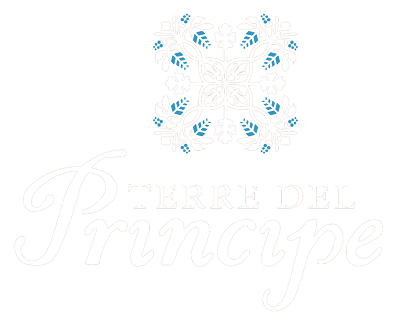Our grapes
Pallagrello
More than being inherently harmonious, can a vineyard be beautiful too? Can it be precious, stylish and rare, capable of fusing architecture and landscape? That’s what Ferdinand IV of the House of Bourbon must have asked himself when, only a short distance from the Royal Palace of Caserta, between the mountains of San Silvestro and Belvedere di San Leucio, he ordered the creation of the "Vigna del Ventaglio" or Fan-Shaped Vineyard in his own gardens. As it was described in 1826, "a semicircle divided into ten sections, resembling the fan from which it took its name. Each section, fanning out from the centre - where there is a small entry gate - contains a different species of grapevine". In the ten sections were equally different qualities of grape, all from the Reign of the Two Sicilies. Only two were from Campania, in particular from Caserta: Pallagrello Bianco and Pallagrello Nero. At the time they were given the names ‘Piedimonte Bianco’, ‘Piedimonte Rosso’, after their place of origin. Another text reads “The wines of this district are excellent, both white and red, and are the best in the reign for their quality and nature, as well as for the pleasing sensation they leave on the palate. They go by the name of Pallarelli".
Hit by the scourge of phylloxera, and, as was the destiny of a large part of Campania’s native vine species, Pallagrello was set aside at the beginning of the 20th century in favour of more productive and resistant plants, until they were rediscovered by Peppe Mancini in 90’s last century
White and Black Pallagrello are a rare case of the same variety white and red grape. Bunches are tight, small, 150 gr. maximum weight, with perfectly round grapes. The White Pallagrello harvest is in the first days of September while the Black Pallagrello matures in October.
Casavecchia
If there is such a thing as a mysterious grape variety with its own magic, it is Casavecchia. Almost nothing is known about its origins except for the legend of an old plant which probably survived the dreadful epidemics of oidium and phylloxera. It was rediscovered, according to farmers, among some ancient ruins in Pontelatone. Found inside the remains of a sort of “ortus conclusus” (or walled garden) near the ancient via Latina which connected Capua and Alife, that plant, with a trunk 40 centimetres across, would give birth to all the others.
Following an age old technique recommended by Columella, a branch was planted in the ground thereby taking root and eventually growing a new vine. Meaning "Old House", the name Casavecchia comes from its place of rediscovery. It could even be hypothesized that this species of vine was the basis of a famous wine of Roman times, "Trebulanum", coming from Trebula Balliensis, an Oscan village that existed near the contemporary Treglia, near of Pontelatone.
Trebulanum, considered by Pliny to be one of the best Italian wines, grew exactly in what is now the area bounded by Pontelatone, Formicola, Liberi and Castel di Sasso - still today the homeland of Casavecchia, a wine of great personality and recognition. Survived only in small families productions, Casavecchia grape Pallagrello were rediscovered by Peppe Mancini in 90’s of last century.
